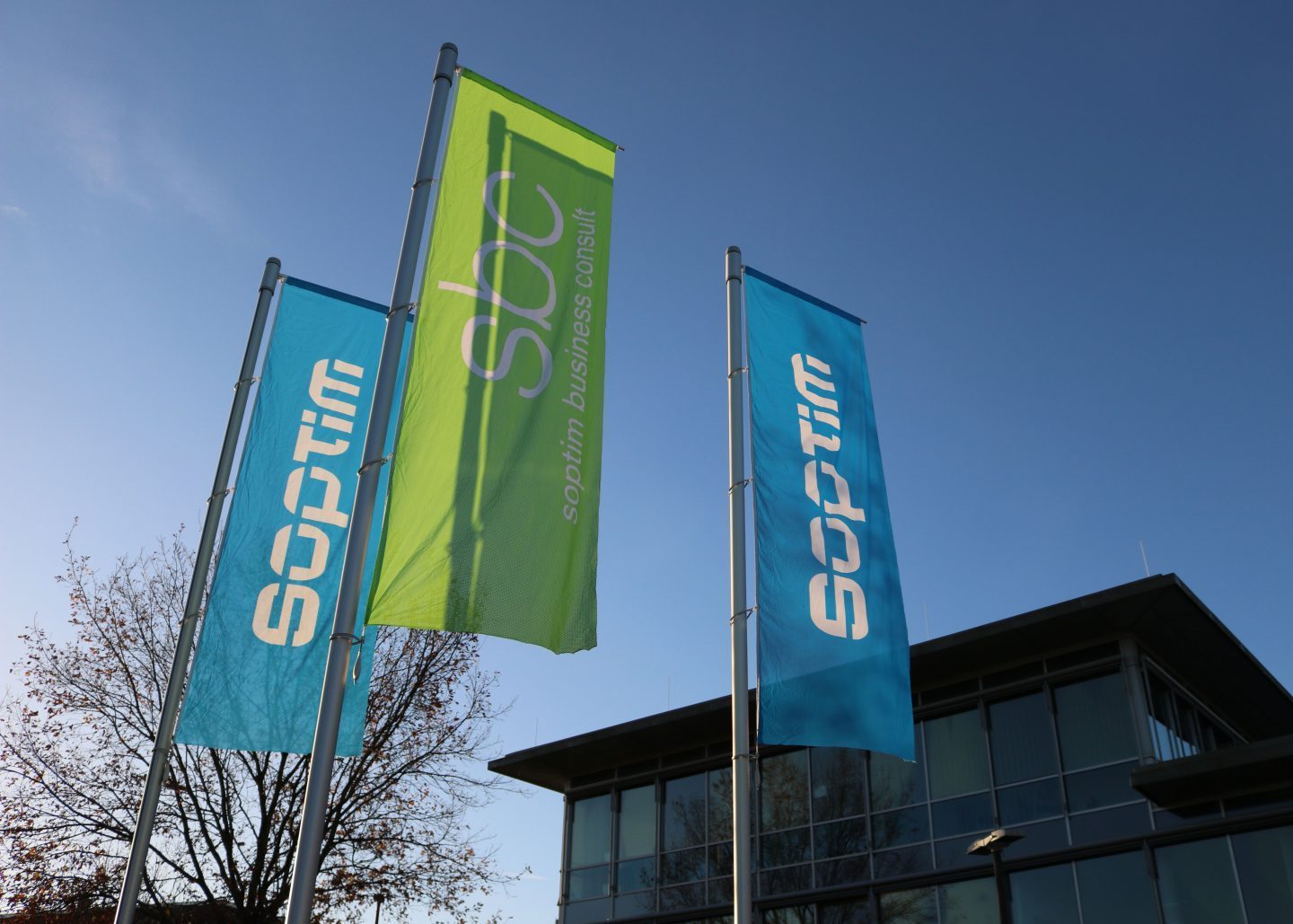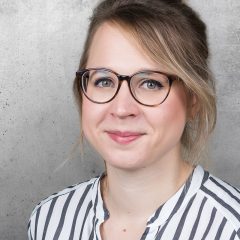The phone call came in February 1975, on a day which Dr Wolfgang Thiele would never forget. The young physicist, who had founded Soptim Ingenieurbüro GmbH four years earlier, was just putting on his tie for his doctoral viva when the phone rang. The chief engineer of the Rheinisch-Westfälisches Elektrizitätswerk (RWE) asked for support with power plant dispatch planning. This contract marked the start of many years of collaboration. Soon afterwards, Soptim’s focus shifted to supporting system operation in Brauweiler in ensuring safe, reliable and efficient management of the company’s 11,000 km transmission network.
At the time, no one would have guessed that this collaboration would last for more than five decades – decades filled with challenges. In addition to continuous advances in technology, the liberalization of the energy markets brought entrepreneurial independence to the network operators, from which Amprion GmbH eventually arose. Energy markets became increasingly dynamic, meaning that traders could rely on non-discriminatory access to the transmission grid. The network operators themselves were also able to benefit from market liberalization – for example, through the creation of a nationwide reserve power market in Germany.
At the same time, the coordination processes of the European transmission system operators also became increasingly complex. In this context, Amprion, as the “Coordination Centre North” of the European interconnected grid, took on a leading role in the design of procedures and IT systems. In addition to facilitating the electricity markets while ensuring system security, the transition to a climate-neutral energy system has been a further major challenge in recent years.
Today, half a century later, Soptim and Amprion GmbH are still working closely together – and constantly tackling new challenges.
From punch cards to real-time systems
Their partnership developed step by step. Initially, the focus was on power plant dispatch planning, followed by the management of grid and power plant data. They then moved into grid control systems and increasingly turned their attention to applications in the energy market.
As their tasks evolved, so did the technical tools. From 1975 to 1979, despite being a software company, Soptim did not yet own a computer. Programmes – stored on punch cards – ran directly on the systems at RWE’s main control centre in Brauweiler. It was not until 1980, when they were awarded a contract for group substation control lines, that they acquired their first computer.
From conventional power generation to climate neutrality
The transition from an energy system based almost entirely on conventional generation – large power plants located close to consumers – to a climate-neutral structure with numerous decentralized generation sites continues to place high demands on transmission system operators and their service providers. Alongside technical expertise, the coordination of many different stakeholders has been and remains crucial. Christoph Speckamp, member of the Soptim AG executive board, explains: “A multitude of players need to be coordinated in these projects, from transmission system operators and distribution network operators through to plant operators and energy traders. In earlier times, we could get by with telephone calls and simple planning tools. Today, with our data-driven systems, we support operational planning and trading processes as well as real-time system operation.”
One innovative topic that is currently occupying both partners in this context is curative system operation. Until now, transmission system operators have carried out redispatch measures exclusively on a preventive basis. If they anticipate congestion in the grid, they take measures in advance to ensure (n–1) security. However, with hindsight, these preventive measures often prove unnecessary. By contrast, measures deployed only when truly needed promise significant cost savings. With this in mind, Amprion is testing out the use of curative measures, together with Tennet TSO GmbH and with Soptim as implementation partner, in the pilot project “Kupilot – piloting of curative redispatch for the transmission network region Emsland”. In curative redispatch, operators still identify potential grid congestion in advance, but unlike purely preventive congestion management, they do not fully resolve it beforehand. Instead, the required measures are simply prepared. This allows operators to utilise the existing grid to a higher degree. These measures are only implemented if and when an actual equipment failure occurs.
“In the interest of efficient performance, our aim is to make the best possible use of the grid infrastructure without compromising security. With curative redispatch, we have gained a valuable tool for system operation that must, however, function reliably when required,” explains Frank Reyer, Head of System Operation at Amprion GmbH, and continues, “As well as the carefully conducted tests in the pilot project, we are relying on Soptim during IT implementation to test out this solution and make it usable in operational terms.”
From the Rhineland to Europe
Amprion and Soptim have long since extended their partnership across Germany’s borders. Julia Watzlawik, Head of Applications for the Energy Market and System Services at Amprion GmbH: “With the highly productive Entso-E Verification Platform, which has been in use for some years now as a means of coordinating European transmission system operators, we have shown how collaboration with a competent service provider and partner such as Soptim can succeed.” Speckamp adds: “In addition to our activities in grid control technology, we will also in the future be involved in cross-border electricity trading, the operational planning processes in the European interconnected grid, and the implementation of the EU’s System Operation Guideline (SO GL).”
Milestones of a half a century
Going back 50 years, the goal of the first contract was clear: the secure system operation of a large-scale transmission network with almost exclusively conventional and nuclear power generation.
This has since developed into today’s diverse system landscape. As well as the control system, including process integration and forecast management, Soptim also delivers solutions for schedule management, trading, outage planning, and the management of unintended energy exchanges within Europe, unavoidable due to system control requirements. These include systems that all four German transmission system operators jointly use, for example to automate the activation of minute reserve power, which has been making a key contribution to the joint balancing energy market since 2012.
Beyond this, Amprion and Soptim have joined the network operator cooperation connect+ and have made a platform available to all market players for the exchange of master and planning data in Redispatch 2.0 through their solution RAIDA.
“The dynamic framework conditions and the intense time pressure for the introduction of the Redispatch 2.0 data exchange platform created a particular challenge that we were able to successfully overcome through our collaboration with Soptim,” Reyer reports.
Factors for success: Focus and flexibility
There is one principle that unites all their projects over the years: solutions must be able to grow – after all, technical and regulatory provisions change, networks are becoming more complex, and the number of players is increasing. The German transmission system operator and the Aachen-based software company have therefore committed to ensuring flexibility. This not only refers to their organisation, processes and attitude, but also – and above all – to their IT solutions. Dr Wolfgang Thiele, member of the Soptim AG executive board: “We create solutions that grow with us and have the flexibility to allow for adjustment. It’s not enough to just create the software. It needs to allow for evolution in five or ten years’ time and perhaps even further into the future, if the framework conditions should change.”
They quickly cite a further factor for success: focussing on a shared task and trust-based collaboration. Direct communication channels have always been a key feature of the partnership. Andreas Walczuch, Head of Process Control Systems at Amprion GmbH: “We always have a direct line, in particular if there’s an urgent problem. The level of trust that has built up between us over the decades means that we can always rely on one another, whatever the situation.”
Speckamp continues: “Our collaboration is shaped by a pragmatic way of dealing with one another. Amprion succeeds in administering the projects in an efficient and lean manner, so that we can focus entirely on our joint tasks. In our collaboration with Amprion, the only ‘wasted energy’ we ever encounter is in the physics sense.”
Consistent with their clear identity and self-image, Amprion and Soptim manage to counter the general tendency for IT projects to become inefficient through governance provisions. Georg van de Braak, Head of Hosting & Applications at Amprion GmbH: “If we want to achieve our goals and fulfil our responsibility towards society, we not only need to develop and expand the networks themselves, but also our IT systems, and we need to do this in an efficient and timely manner. Soptim has always proven to be a reliable partner in this regard.”
This balance between a well-established partnership and the necessary capacity for adjustment is the secret of success for this cooperation, which began with a spontaneous phone call back in February 1975 and is today making a key contribution to the secure supply of electricity across Europe. Soptim founder Dr Wolfgang Thiele looks back: “Going into my doctoral viva with a verbally agreed contract in the bag, I was on cloud nine.” From this brief conversation, a dependable and future-oriented partnership was to grow and has continued over the course of five decades – kept alive by constant renewal and trust. Or as Speckamp says, hitting the nail on the head: “With ambition and enthusiasm, we share our drive for excellence with Amprion and continue to work together to ensure that the lights never go out.”
by Uwe Taeger, specialist journalist, Ulm
published in: ew – Magazin für die Energiewirtschaft, Sept 2025


